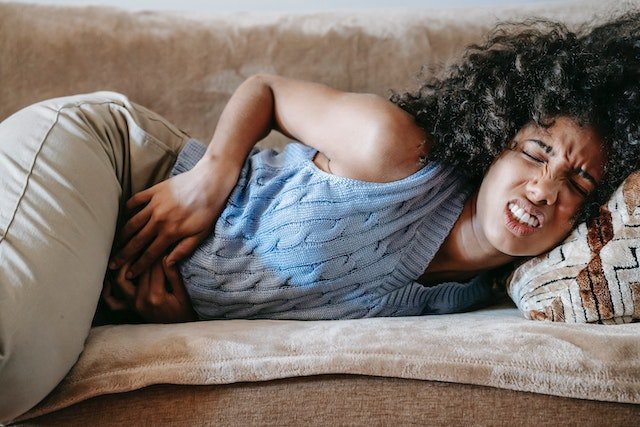9 Health Tips for Managing PMS
By Dr. Stephanie Karozos, MD
“Who is this me-shaped monster who is irritated at the way my partner breathes, who wants all of the salty, carby, sweet food, whose sleep is disrupted and who is left feeling unmotivated to move my body or sometimes do anything at all?” Is this you in the few days before your cycle starts? In all seriousness, people who menstruate experience their cycles in a lot of different ways. For many of us, the days before our period starts can leave us feeling nearly unrecognizable. If you are someone who suffers from PMS, and you want some non-pharmacological ways to manage your symptoms, here are a few things you can try:
Know your flow
- A normal cycle varies in time and is typically around 28 days (21-40 days can be normal, depending on the person). Day 1 of your cycle is the day your period begins, and the final day is the day before your menstrual cycle starts. If you notice sudden changes in your cycle length, the heaviness of your periods, or the severity of your symptoms during your period, it could be an indicator of hormonal dysfunction (for example, hypothyroidism can present with period changes). Please seek the care of a trusted health professional if you have any concerns related to cycle length, flow, or symptom severity.
Evaluate your hormone health
- While it is, to some extent, normal to have mild PMS symptoms, severe symptoms or symptoms of PMDD are cues to find a skilled professional who can take a look at your hormone levels, symptoms, and any potential past or present triggers of hormone dysfunction. Seek out an Integrative or Functional doctor who can take more time with you and look beyond the conventional workup.
Exercise
- There’s a common theme in these posts for a reason. Exercise really does keep us healthy in so many ways. Aerobic exercise (walking, jogging, swimming, biking, rowing, etc) has been shown in studies to reduce PMS symptoms. As always, meet yourself where you are when initiating an exercise program. Gradually build up aerobic exercise to a goal of 30 minutes 3-5 times a week.
Drink a lot of water. Seriously.
- You probably need more than you think. Aim for at least half of your body weight in ounces of water per day. If you don’t want to check your weight, aim for ~70 ounces a day of water. Add a pinch of high quality sea salt or electrolytes to really absorb the water. This should help with mood, sleep, energy, cramps and potentially water retention.
Eat your fruits and veggies
One study looked at PMS symptoms in college-aged students and found that folks who ate a high fat, calorie-dense, salty diet had more PMS symptoms than those who did not. That same study found that students eating fruit had fewer symptoms. Phytonutrients in veggies and fruit can help reduce inflammation, reduced salt prevents water retention, and higher calcium foods can help with cramping. Let food be your medicine. While you may still eat the foods you crave from time to time, strive for moderation and have some veggies beforehand to stabilize your blood sugar.
Consider supplements
- Magnesium can be helpful to reduce cramping and promote relaxation. For most people, I would recommend magnesium glycinate (better absorbed, less likely to cause GI upset than other forms of magnesium) and start with 200-400mg nightly.
- A calcium and magnesium combination supplement has the potential to be even more helpful for PMS symptom relief. Calcium at a dose of about 500-1200mg daily as needed can be helpful for PMS symptoms.
- B6 can be low, particularly in folks who have been on hormonal oral contraceptives for many years. A b-complex or even just a B6 supplement can be helpful particularly if your PMS symptoms involve feeling more depressed or blue.
- Vitex, or chasteberry, has been shown to reduce breast tenderness. It’s widely used by herbalists to support other symptoms of PMS as well. Whereas calcium and magnesium can be used more as-needed, vitex is a supplement that should really be taken daily for a few cycles to have maximal benefit.
- Other supplements like St. John’s Wort can be helpful for mood symptoms. With St. John’s Wort specifically, you want to be careful about interactions with any medications you are taking, specifically birth control pills. If you aren’t taking anything that St. John’s Wort would interfere with, it can have similar efficacy to a SSRI (depression drug) but with far fewer side effects.
Mindfulness/Mind-Body Medicine
- Calming practices like daily meditation, restorative yoga, tai chi, or journaling can help to ease PMS symptoms as well. Consider using apps like Insight Timer that offer free guided meditations and start with just a few minutes a day.
Acupuncture
- Acupuncture can be helpful for a myriad of hormonal symptoms, and PMS is no exception. With very low risk of harm and considerable potential for benefit, PMS sufferers should certainly try it if it’s accessible.
Medications
- Medications can be used for PMS relief as well, but assuming you are utilizing the help of a trusted medical professional to choose your supplements and for dietary and exercise guidance, they have the most potential to cause side effects of any of the treatments on this list. Because of that, I would recommend using medication after trying the other modalities on this list, if possible. If other avenues to PMS relief like supplementation and acupuncture are not accessible to you and medication is, for cost purposes, then you can consider NSAIDs, SSRIs, contraceptives and other medications for PMS symptom relief.
Are you interested in acupuncture or an Integrative Medicine consultation to take a deeper dive into your hormone health? Call Aspen Integrative Medicine or visit our online scheduler to make an appointment with Dr. Karozos today!
